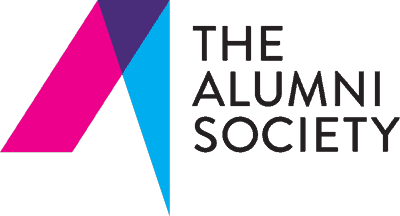Discussion Board: Are universities preparing Latinos for advancement in corporate America?
Three experts weigh in on diversity initiatives and the development of Latino students in higher education
Interviews by Mary Kenney
DANIA MATOS
Former President, Current Ex-Officio Board Member
BROWN UNIVERSITY LATINO ALUMNI COUNCIL
The “climbing the corporate ladder” adage implies a straight level of ascension in which a person advances by climbing each rung, until you reach the top. That captures the individualistic spirit in which a person is solely responsible for his or her own success. However, advancement in corporate America is not couched in such a linear approach. To play an effective role in preparing Latinos for such an environment, colleges and universities need to foster a more holistic approach.
What colleges and universities do well is provide a structure and methodology for self-advancement: you pick your classes, you choose your major, you do the work, you get a degree. But opportunities for teamwork and a collective identity are fewer, leaving Latinos less prepared to thrive in a corporate culture that often calls for collaboration.
The concept of mentorship is well-known and promoted in colleges and universities, but the same can’t be said for sponsorship. In corporate advancement, it is important to have both a mentor and a sponsor. A mentor helps you navigate the landscape, while a sponsor gets you there.
Another area that colleges and universities can improve is encouraging Latinos to tap into their alumni community, especially affinity groups. Establishing participation and creating a connection early would enhance Latinos’ efforts in seeking out similar opportunities in corporate America.
Colleges and universities have made great strides in increasing Latino enrollment. Despite this, there are areas for improvement that would not only contribute to enrollment, but also retention. This could be done by providing information about financial aid, making a significant effort to diversify faculty, and retaining work-study opportunities with financial support.
While I would not call it persuasion, there is a certain familial engagement approach that is important to consider when advocating for Latino students. Latino students and their families place a lot of emphasis on education as the key to betterment, but they often are missing access to knowledge or experience on how to apply, finance their education, and build a support network. For some Latino students, an education is not only for themselves, but for the betterment of their families and, on a larger scale, their community.
The Latino population is not homogenous. There is not one set answer to increasing enrollment, so the more the strategy is diversified in every respect, the better the outcome.
RUBEN MARTINEZ
Professor
MICHIGAN STATE UNIVERSITY DEPARTMENT OF SOCIOLOGY
Colleges and universities can do better by recruiting Latino students generally and in business programs, particularly. In 2008, for example, only three percent of students receiving an MBA degree were Latino. In 2012, Latinos made up only 8.6 percent of students receiving a business degree. To address the problem of access and cost, colleges and universities need to develop a robust pipeline of students into MBA programs and provide assistance to students with financial need. Schools also need to reconsider the requirement that students have substantial work experience before seeking the MBA. It is not clear what is achieved by that requirement.
Colleges and universities add programs to recruit Latinos, but they seldom transform their organizational cultures to effectively integrate Latinos into the life of the campus, which ultimately has consequences for graduation rates. Institutions of higher education continue to have dominant cultures that emphasize individualism. Such an emphasis tends to clash with the collective cultures of Latinos and limits their integration into the institutional environment. Colleges and universities need to achieve new levels of diversity incorporation throughout their programs to provide environments that welcome and support Latino students.
Institutions in states where affirmative action programs have been banned continue to struggle in proactively recruiting and enrolling Latino students. These include California, Florida, Washington, and Michigan. Enrollment in Florida has kept pace with the growth of young Latinos, but it has dropped in the other states following the ban of affirmative action.
Programs preparing Latino students to obtain a college degree need to engage Latino parents in the process. Since Latino students tend to be averse to loans, need-based financial aid and scholarship programs need to be expanded, and Latino students and their parents need to be made aware of the sources of financial support available. Latino males, in particular, need to be targeted for college preparation and enrollment, as their presence in colleges and universities has declined over time. Finally, college-going programs need to engage Latino parents and students in middle schools to promote college aspirations and college-going behaviors.
AIXA VELEZ
BMO HARRIS BANK
I believe some colleges and universities are starting to do an okay job at preparing Latinos for corporate America, but it’s not enough. There’s still more work to be done.
Institutions have internship programs, yet many don’t make them mandatory. Students, especially Latino students, would find great value in having a mandatory internship so they can explore corporate America early, learn a specific industry, start building a network, and gain new skill sets.
It would also be great if schools offered mentorship opportunities for Latino students. Pair them with a professional in their desired field and have a consistent touch point to talk through both the positive and challenging experiences they may have.
Research shows more Latinos are enrolling and attending college, but the graduation rate is still low. There are a few college access programs, such as the Posse Foundation and Chicago Scholars, that are doing great work to get diverse students into top-tier colleges and universities. I’m a proud Posse alumna and can confidently say Posse helped give me, a Latina born and raised in Chicago, access to the University of Wisconsin-Madison network and so much more.
It’s one thing to describe a university as “diverse and inclusive” on a brochure or website, and it’s another to take action and give deserving students a chance at a great education, so they become leaders in the workforce.
Family is critical for Latino students. When schools are recruiting Latinos, there should be some sort of family forum so the student and their parent(s) can attend, hear the same information, and ask questions. It’s important to educate everyone involved in the student’s life, so they all feel part of the student’s decision to go to school. It’s important to let the families know their child will be safe and will have options to finance their education.
Having a continuous support system while in school is often overlooked. Increasing the number of Latino students means not only getting them into great colleges and universities, but making sure they stay in school and providing them with support so they can graduate. I was fortunate enough to have my Posse mentor and a mentor on campus. It was a great support system, and I wish it existed for all Latino students.


